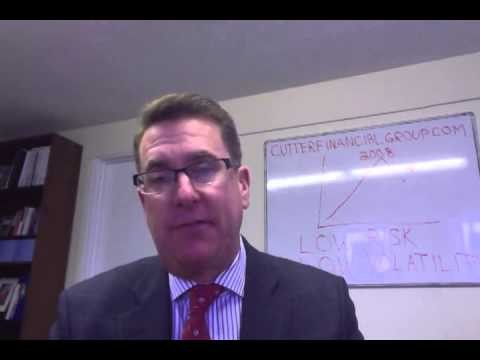How Risky Is Your Portfolio Cutter Financial Group LLC
Post on: 26 Май, 2015 No Comment

Most investors are not familiar with the unique characteristics of high-yield bonds. It is often assumed that the primary determinant of price trends in these bonds is the trend in interest rates. That is not necessarily the case. In fact, close examination reveals that high-yield bonds more often correlate to equities than to securities that respond purely to interest rates, such as US Treasury securities. So if equities go up, then high yield bonds go up, right?
One of the things that sticks in my mind from 2007 is the fact that the prices in the high-yield bond market moved downward before the equity market. and not just once, but three or four times throughout 2007 and 2008.
I recall looking at charts and thinking, “Why has this correlation broken down?” Inevitably, the credit markets were right, and the equity market eventually caught up and re-established the correlation. The tight correlation that we have seen between the high-yield bond markets and the S&P 500 over the past 12 months (and actually, the last three years) has broken down this month, which in the past has led to equity weakness.
Here is another fact worth mentioning. Since World War II the stock markets in the United States have exhibited a non-random distribution of returns over annual periods. In fact, $1,000 invested in the Dow Industrials during the six-month period from early May to the end of October every year from 1949 until 2010, would have declined 27 percent. On the other hand, that same $1,000 investment in the Dow, if invested during the other six months of the year over the same time period, would have grown to over $94,000.
Why do I mention this to you, Cutter Family Finance readers? Because this is the perfect time for us to have a serious discussion about risk.
If you are like most people, you probably evaluate your portfolio in terms of its return. However, return is not the only factor you should consider; also important is the amount of risk you take in pursuing those returns. The term “risk” is often understood to mean the risk of loss. However, a portfolio is generally a means to an end, such as paying for retirement or a child’s college tuition. In that context, “risk” also means the risk of not meeting specific financial needs.
Recently, I had a prospective client in my Falmouth office, let’s call him John. We performed a portfolio analysis to see how his portfolio performed over the last 13 years; we were especially interested in evaluating its performance during the Lost Decade of 2000-2010. What is interesting is that when I initially asked John how he thought his portfolio had performed over the last 13 years, John proudly told me that his portfolio earned an average of about 7 percent a year for the past 13 years. However, I noticed that his annual returns have been very uneven; one year his return may have been 11 percent, another year it may have been down 10 percent. I then showed John a strategy that has returned 7 percent annually during the same time frame and avoiding any negative years.
You might think both would end up with the same amount of money after 13 years, but that’s not the case. This is in part due to the timing and size of the declines in John’s portfolio. Big losses in the first year or two resulted in subsequent recovery, rather than compounding growth.
I explained to John that if you listen to conventional financial advertising, you typically hear about one-, three-, five- and 10-year returns. But, we should be discussing the risk-adjusted return of investments, which accounts for volatility.
One of the most common measures of volatility is standard deviation, which gauges the degree of an investment’s up-and-down moves over a period of time. It shows how much an investment’s returns deviate from its own average; the higher the standard deviation of an investment or portfolio, the bumpier the road to those returns.

Another way to assess a portfolio’s volatility is to research its beta. Beta is a number that compares a portfolio’s ups and downs to those of a benchmark index, such as the S&P 500, and indicates how sensitive the portfolio might be to overall market movements. An investment or portfolio with a beta of 1 would have exactly as much market risk as its benchmark. The higher the beta means the more volatile the portfolio.
John’s brokerage portfolio is based on the Modern Portfolio Theory, which assumes that an investor should receive greater compensation for taking more risk. According to that theory, a stock, bond, or mutual fund should offer a potentially higher return than a Treasury bond; the difference between the two returns is the equity’s risk premium.
So, when we analyzed John’s portfolio, we took his current portfolio value and asset mix and plugged in the returns of those assets from 2000–2013. We found that with his current portfolio, the $750K would have grown to $1,206,073 and had a beta (risk) of 1. If that same amount was in Treasuries during the same time period, with significantly less risk, it would have grown to $1,214,021. In fact, if he had used a strategy that had returned 7 percent yearly and avoided market losses, his portfolio would have grown to $1,933,901.
What’s my point? Understanding risk premium helped John to evaluate whether the return he is getting is worth the risk he is taking. Currently, he is assuming all the risk and receiving minimal returns.
So the questions I have for you are these. Are your returns high enough to take on the amount of risk you are assuming? Are you comfortable with your risk-reward tradeoff?
Folks, now is the time to be vigilant and to stay alert, because you deserve more.














